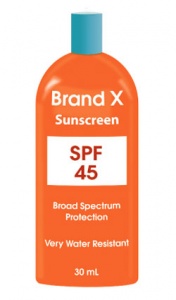
The sun is instrumental in our bodies ability to create vitamin D. Skincare experts suggest that we spend about 15 minutes a day in the sun but overexposure or unprotected exposure can lead to unpleasant skin conditions that include sunburn, unsightly wrinkles, skin degeneration or skin cancer. In order to protect our skin it is highly recommended that sun block be used, especially if an individual is aware that they will be exposed to the sun’s harmful rays for a long period of time. But like choosing many dermatology products, choosing a sun block can be confusing with all the varieties that are available. Sun blocks are categorized by various features such as ingredients, resistance to water, sun protection factor (SPF) and whether or not they block UVB or UVA rays. Some are also categorized by the age group they are specified for such as those which should be used for children, teens or adults. In order to maintain proper skin health, it is important to select the right sun block. Here are a few things to think about in making a selection.
Check the SPF
When you look at a bottle or tube of sun block there should be a number on the container which indicates the SPF. Most people assume that the higher the number, the better the protection that is provided. Basically, the SPF lets an individual know how long the skin is protected from the UVB rays before the skin begins to burn. It is suggested that you choose a sun block with an SPF of at least 30 which blocks about 97% of the sun’s UVB rays. Most skin professionals agree that an SPF of 45 will block about 98% of the UVB rays, but purchasing anything with a rating higher than 45 is not necessary.
Look for a “broad spectrum” Sun Block
Sun block does not have a rating which indicates how effective it is at blocking UVA rays. This is why it is very important to read through the list of ingredients used. Sun blocks which contain zinc oxide, oxybenzone, titanium dioxide, and avobenzone and have an SPF of at least 30 are considered to be broad spectrum sun blocks. Zinc oxide and titanium dioxide have specifically been shown to be both safe and effective in preventing negative effects from the sun in most cases.
Does Sun Block need to be waterproof?
There are no types of sun block which are completely waterproof, but many are water resistant. It is important to consider what type of water you may be exposed to when wearing sun block. For those who will be swimming or even sweating a lot the sun block will be washed away eventually. Read the instructions on the bottle to see how often it is suggested the substance is to be reapplied. Most sun blocks need to be reapplied every 30 to 80 minutes depending on the activity and the type of sun block being used.
Choose One You Like
There are many different brands of sun block available and there are plenty of them that meet all the criteria above. It is entirely possible to find one that meets this criteria and you like using. As with many dermatology products, each may vary in consistency, color, and just how they feel going on. Each individual will have to purchase the sun block that feels best to their skin while offering adequate protection from the sun’s rays. There are many very good brands to choose from and it is certain that each individual can find the brand that they are comfortable using.




